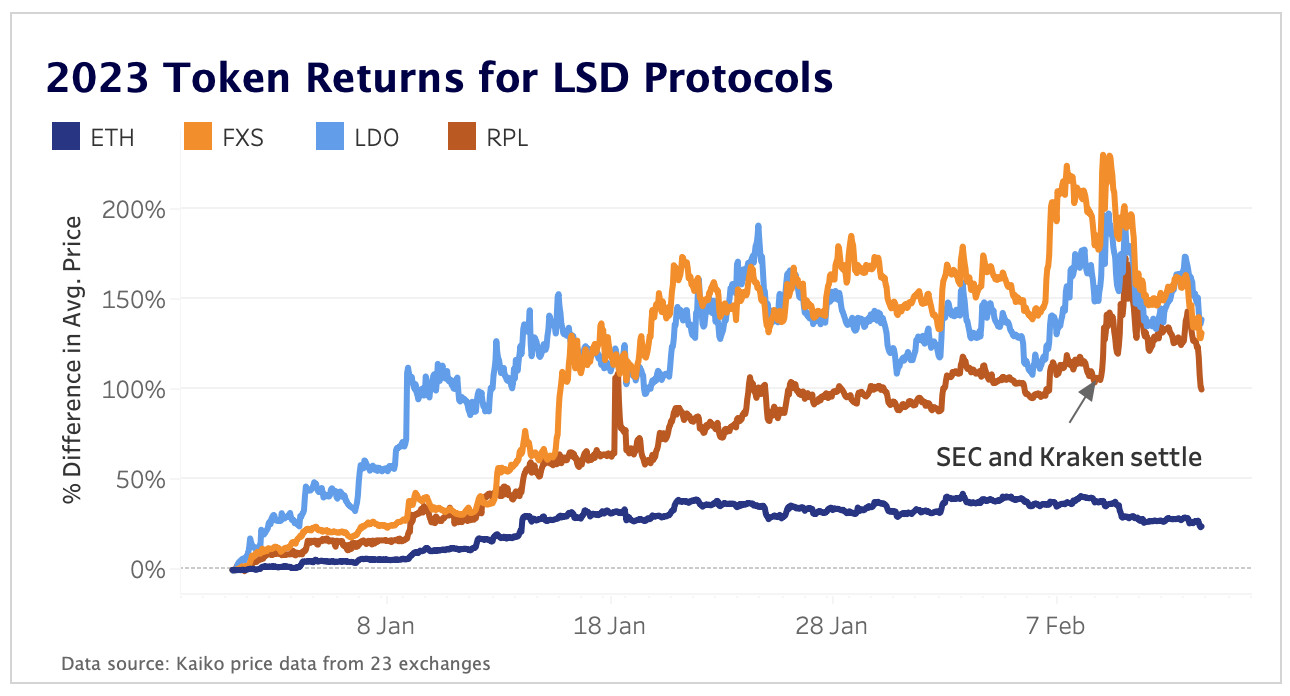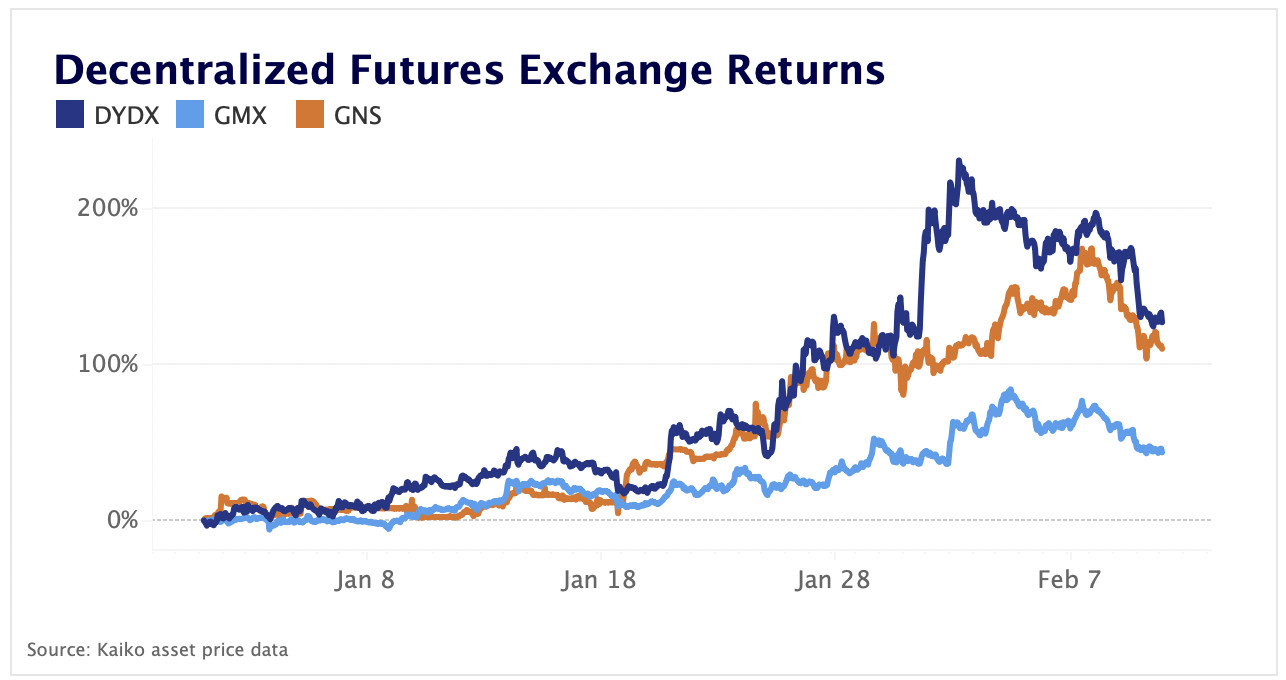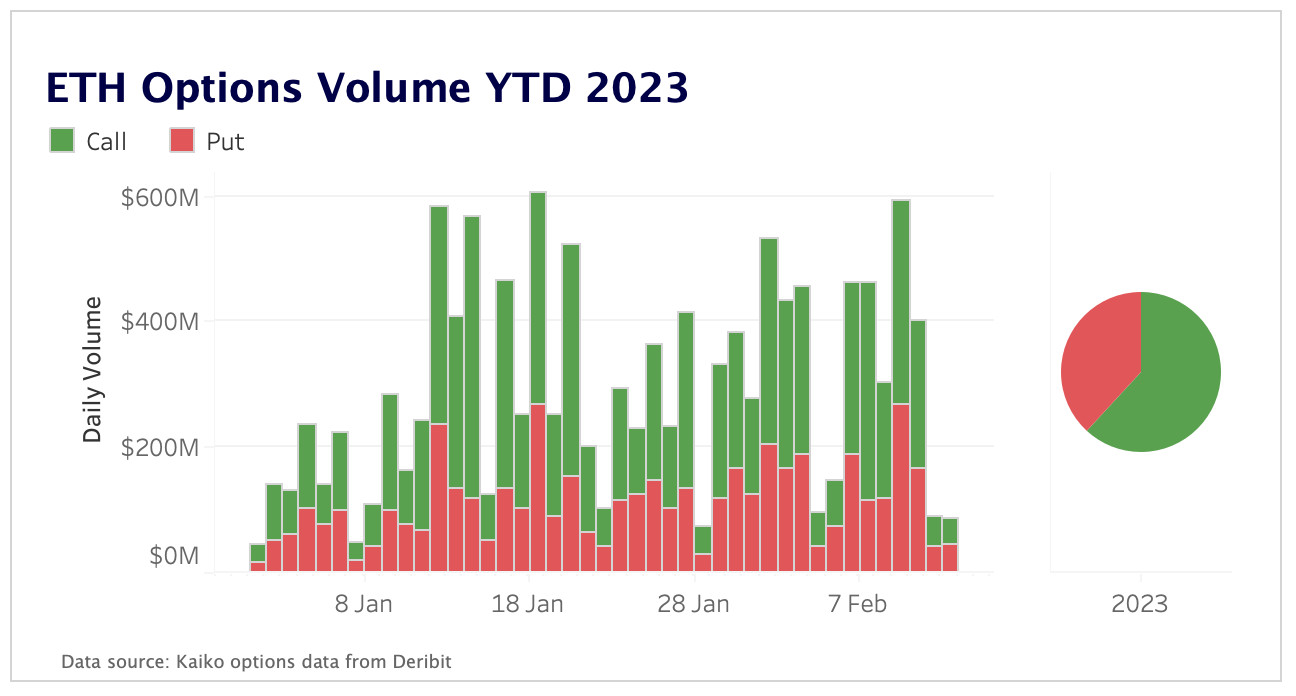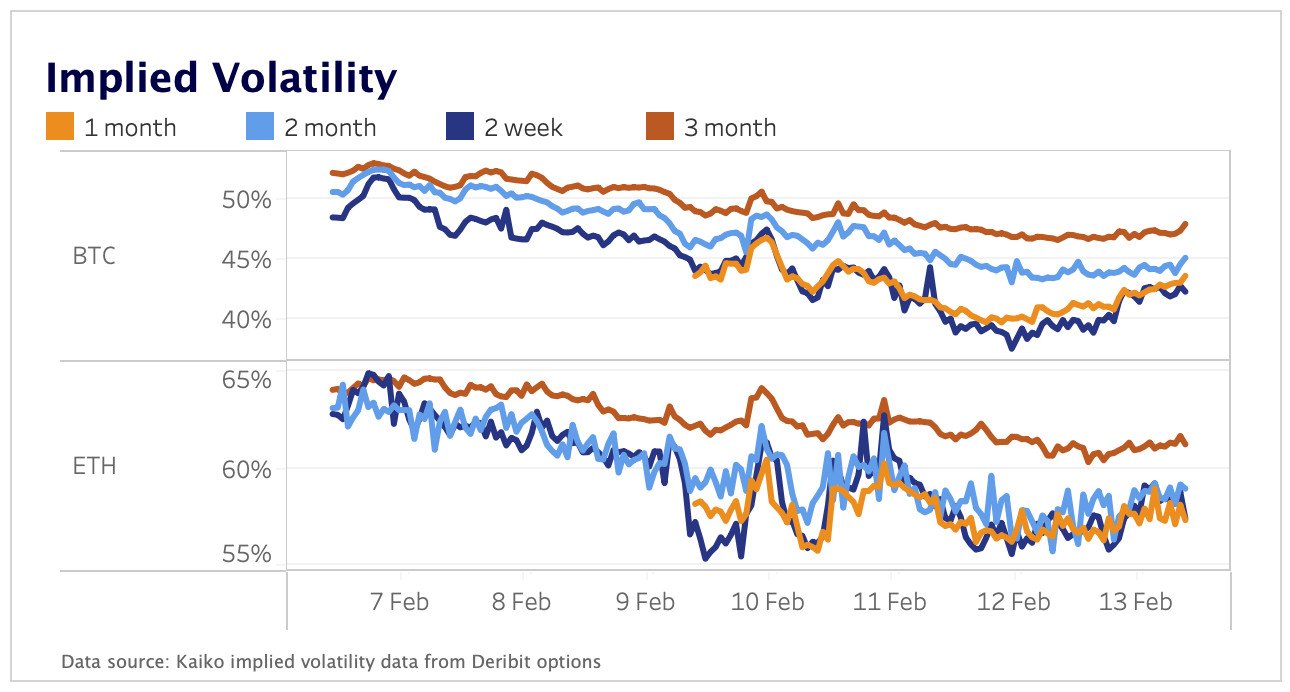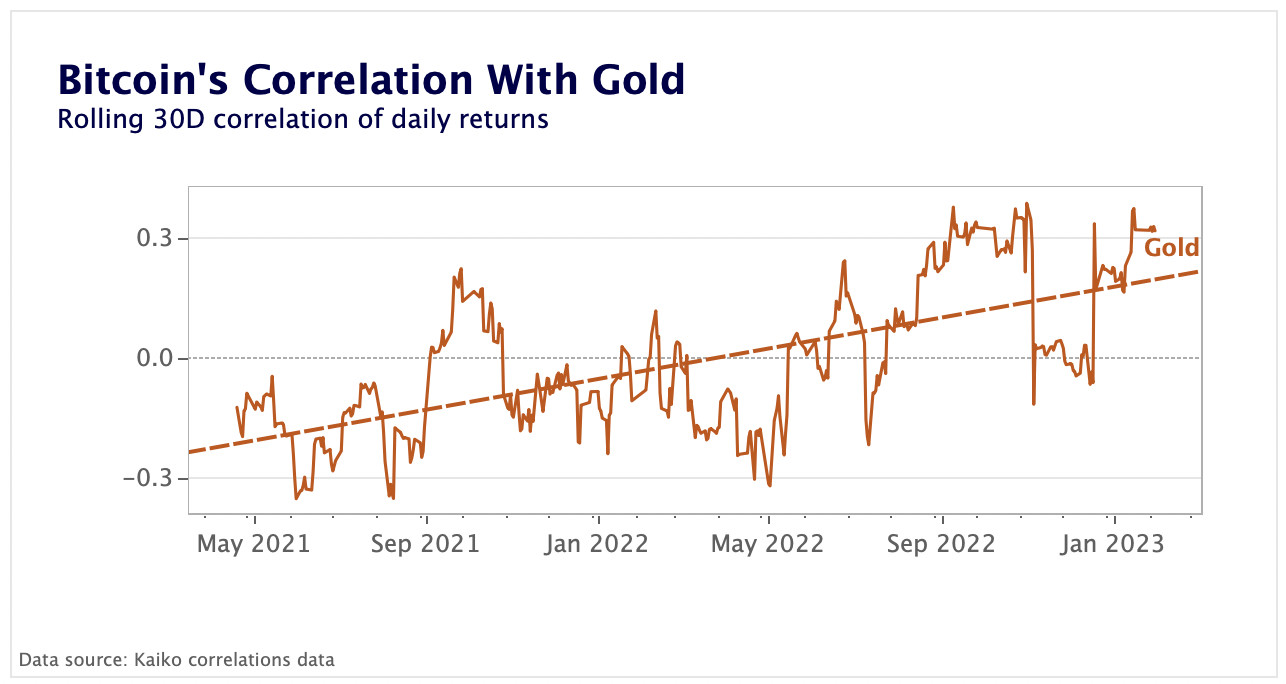A summarizing review of what has been happening at the crypto markets of the past week. A look at trending sectors, liquidity, volatility, spreads and more. The weekly report in cooperation with market data provider Kaiko.
The last 7 days at the cryptocurrency markets:
- Price Movements: cbETH, Coinbase's liquid staking derivative, started trading at a discount after news broke that the SEC had fined Kraken $30mn.
- Market Liquidity: LocalBitcoins shut down after 10 years of service after competition and a prolonged bear market sapped trade volume.
- Derivatives: ETH options markets look bullish but more volatile than BTC.
- Macro Trends: Bitcoin's correlation with gold is at yearly highs but remains weak.
Markets brace for regulatory impact
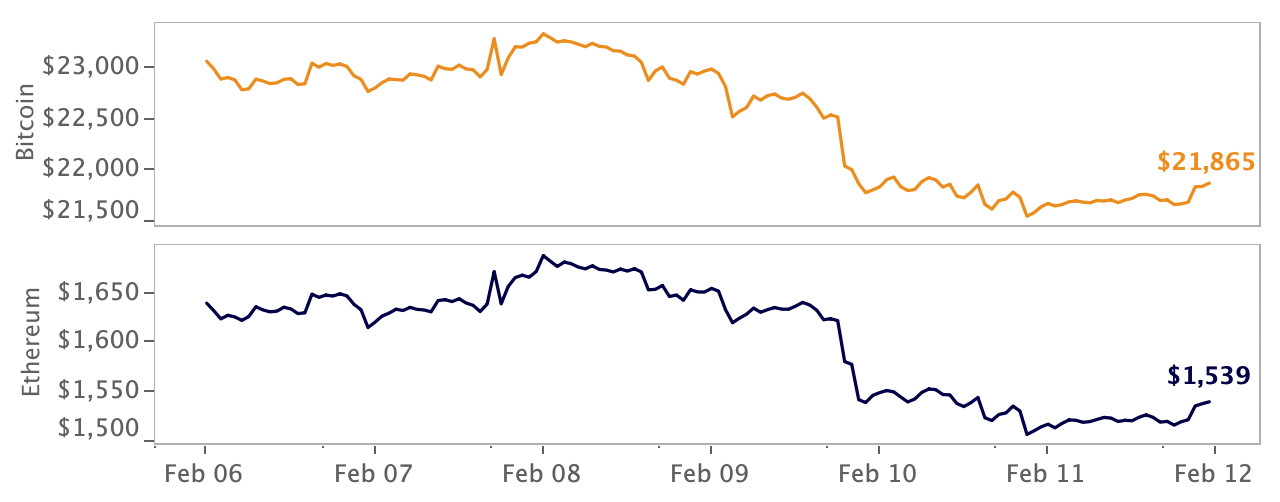
Crypto markets retraced last week as regulators targeted the industry in what looks like a synchronized crackdown, with Bitcoin (BTC) and Ethereum (ETH) down 5% and 9% on the week. In other Binance news, the exchange temporarily suspended USD payments, likely due to issues with their banking partner Signature Bank. Meanwhile Genesis, Gemini and DCG reached an agreement in bankruptcy court and Blackrock and State Street increased their stakes in the crypto bank Silvergate.
SEC targets centralized staking services
Last week, The SEC fined Kraken $30mn for its interest-bearing Ethereum staking service under the reasoning it operated as an unlicensed securities offering. The service has since been shut down for U.S. customers. Coinbase, which operates the largest centralized liquid staking service, is rightfully concerned, although the structure of its service differs from what Kraken offered.
cbETH, Coinbase’s liquid staking derivative (LSD) which is issued 1:1 to clients who deposit ETH in the service, tumbled on February 8 following the regulatory news. cbETH is different from most ETH LSDs in that it accrues staking rewards to the token rather than rebasing, meaning that the price of cbETH should increase relative to ETH over time; its current fair value is about 1.025 ETH. Interestingly, cbETH’s price actually hit a low of 0.984 on Coinbase on February 5, three days before the announcement. Additionally, there was a spike in cbETH sells in this same pair on February 6, with 3,164 sold to just 143 bought.
The shutdown of Kraken's staking service may open the door for a number of decentralised staking services. Within hours of the SEC’s decision, the token prices of some of the largest decentralised ETH staking protocols spiked.
Coinbase and Kraken alone make up 20% of the ETH staking market, so if the SEC were to go after centralized stakers this market share would be up for grabs by the likes of Lido, Rocketpool and Frax, who are leading the race for decentralized staking options.
Decentralized derivatives exchange tokens outperform in 2023
dYdX (DYDX) has been the top performer amongst the largest DeFi perpetual exchange tokens this year, surging more than 125% compared to 110% for Gains Network (GNS) and 43% for GMX (GMX). dYdX is the largest of the bunch, with close to $300mn in open interest. Meanwhile, GMX has $175mn in open interest, $162mn of which is on Arbitrum. Gains Network has close to $35mn of open interest on Polygon and Arbitrum, most of which is for forex instruments, as opposed to dYdX and GMX which only offer crypto. As discussed in a previous Deep Dive, the DYDX token has benefited from the dYdX Foundation delaying a planned unlock of tokens until December.
LocalBitcoins shuts down
Peer-to-peer cryptocurrency exchange LocalBitcoins is shutting down after operating for more than 10 years as one of the oldest exchanges in the space. The closure comes not long after the United States Financial Crimes Enforcement Network mentioned the platform among the biggest Bitcoin senders to the Russia-linked exchange Bitzlato. Volumes on the exchange have been plummeting consistently now for two years as LocalBitcoins struggled to keep up with the competition, particularly after Binance launched their own peer to peer platform in 2020. Interestingly, LocalBitcoins volume did not mirror the trend of spiking volumes seen on other exchanges during the bull run of 2021, leaving the exchange on the back foot competing against far bigger players like Binance.
ZK-related token volumes climb on DEXs
Tokens related to zero-knowledge proof (ZKP) systems have surged in recent weeks amidst increasing interest in the technology. ZKPs allow for a party to prove that certain information is true (for example: a transaction, batch of transactions, or wallet’s holdings) without revealing underlying information. ZK-rollups have been touted as the future of Ethereum scaling and other protocols are making use of ZKPs to better preserve privacy on the blockchain.
For example, we have charted MUTE, the governance token of Mute Switch, a DEX built on the zkSync Ethereum Layer 2. Nearly all of its volumes take place on Uniswap V2 and the chart shows how subdued volumes were to begin the year, with less than 5 ETH worth traded most days. However, it has since surged in price, more than doubling relative to ETH and just over 1k ETH ($1.5mn) worth traded on February 9.
ETH options markets bullish but showing signs of volatility
ETH options markets have been bullish to start 2023, with over 60% of volumes dominated by calls. Volumes were muted to start the year as daily volume hovered around $100mn, but as crypto prices have improved, the ever-speculative options markets have seen renewed interest, surpassing $400mn in daily volume several times just in February. As volatility begins to return to crypto markets we should continue to see investors placing their bets in the option markets, with an obvious bias to the call side so far in 2023. However, looking at implied volatility, it seems as if investors are expecting more volatility in ETH than BTC.
Implied Volatility is a forward looking metric, offering insight into option investors expectations for volatility over different time periods. Last week’s sell off saw different reactions between BTC and ETH investors, with ETH’s short term implied volatility spiking more than BTC. A sign of market panic is when short term implied volatility is greater or equal to longer term volatility, which is contrary to a normal market structure. We saw this happen in ETH markets last week as 2 week volatility briefly equalled 3 month volatility on the February 11, before reverting to usual levels. Interestingly, BTC implied volatility displayed less of a spike, indicating investors are expecting ETH to be more volatility over the coming weeks.
Bitcoin's correlation with gold is on the rise
While Bitcoin’s correlation with risk assets has weakened in 2023 stabilising around .5, its correlation with safe-haven gold has risen to its consistently highest levels in over a year. Both gold and BTC prices soared in January before losing some traction in February as rate expectations shot up following a strong January U.S. jobs report. Overall, bitcoin, which is often viewed as a high-beta version of gold, has largely outperformed gold this year with the BTC to gold ratio rising to its highest level since the FTX collapse. The correlation between the two assets is still only weakly positive, a bit over 0.3.



